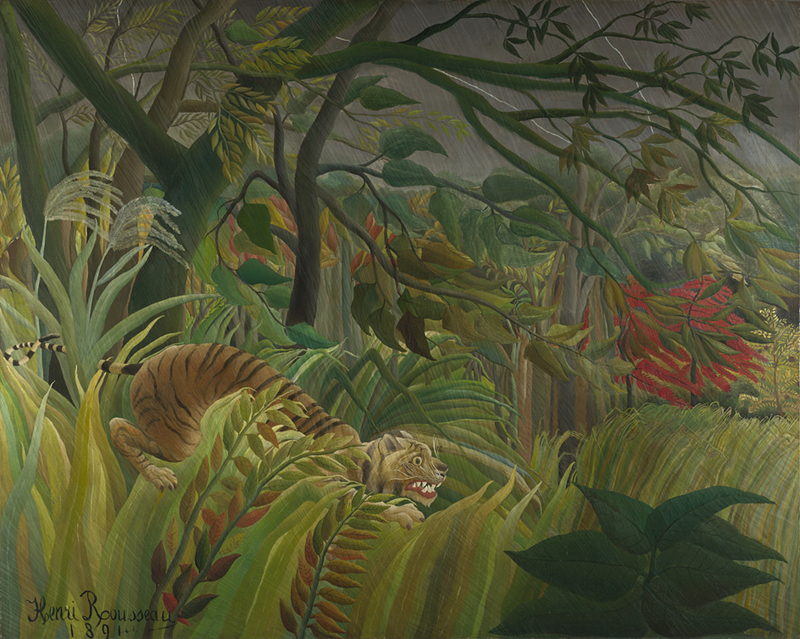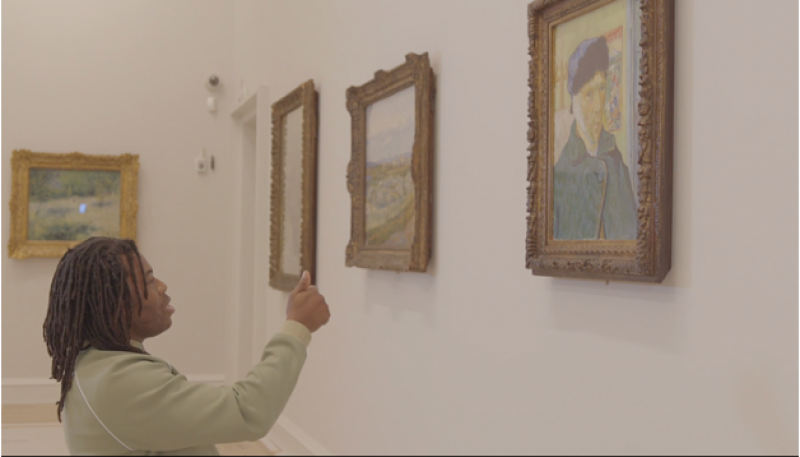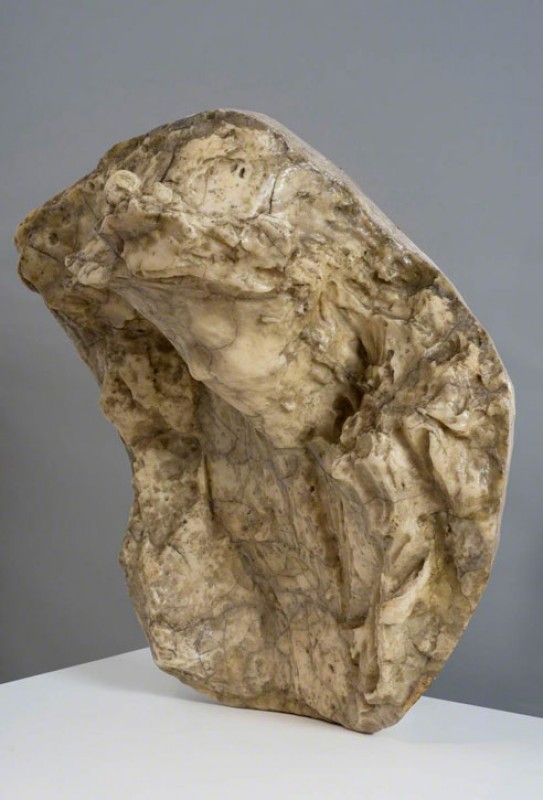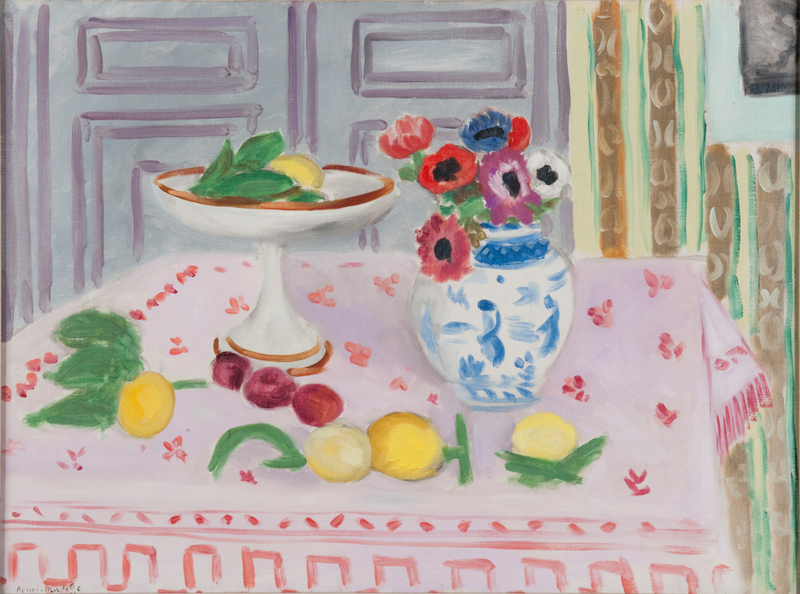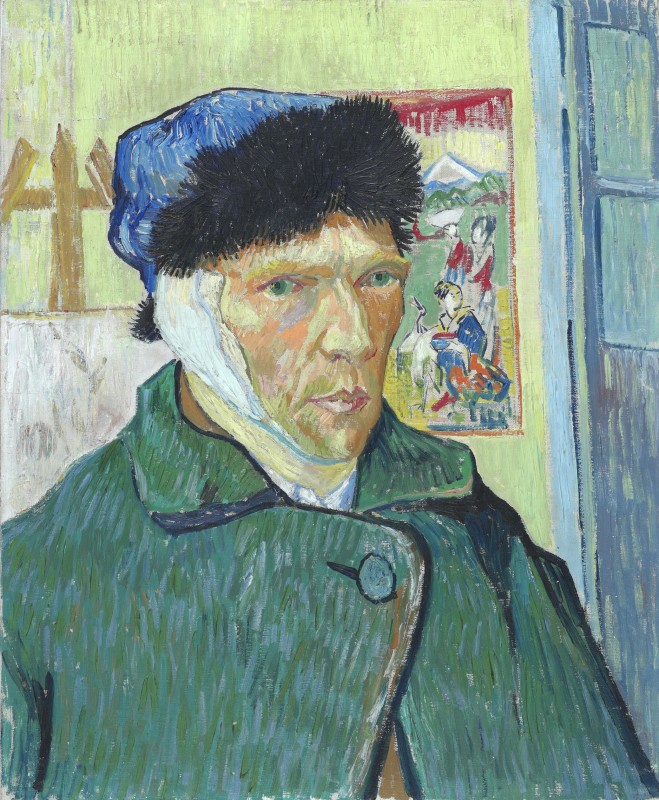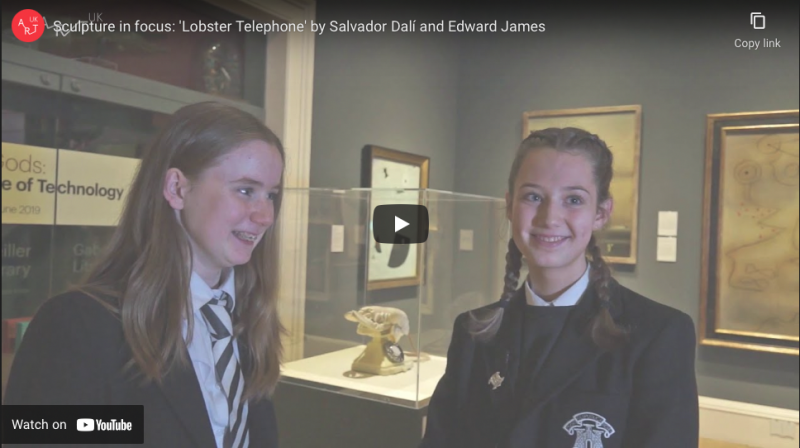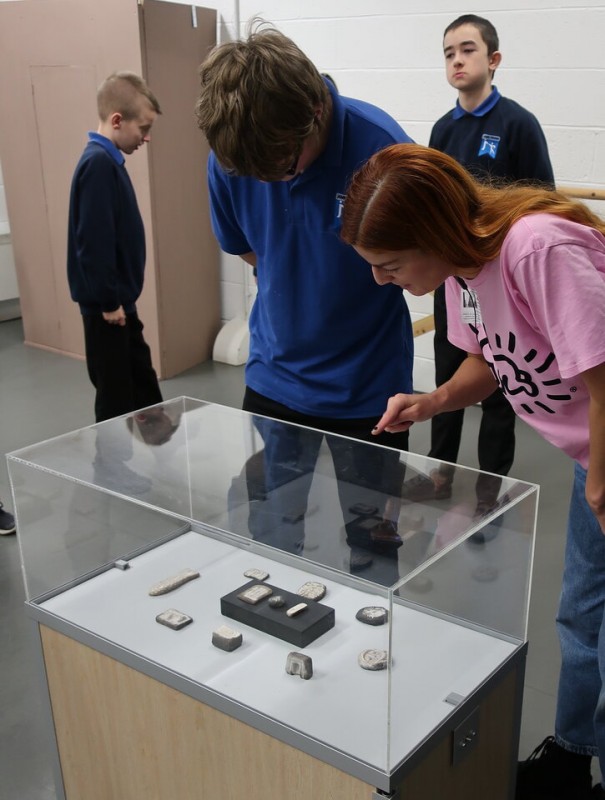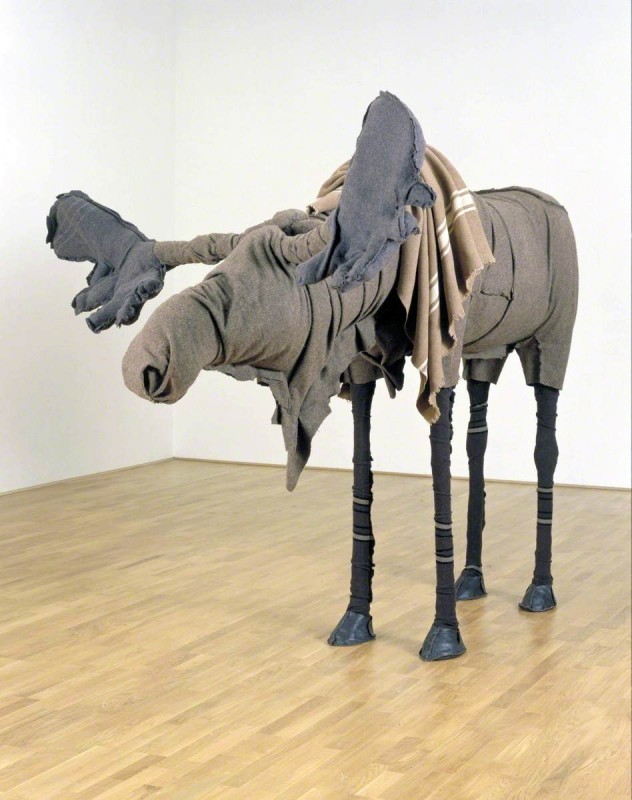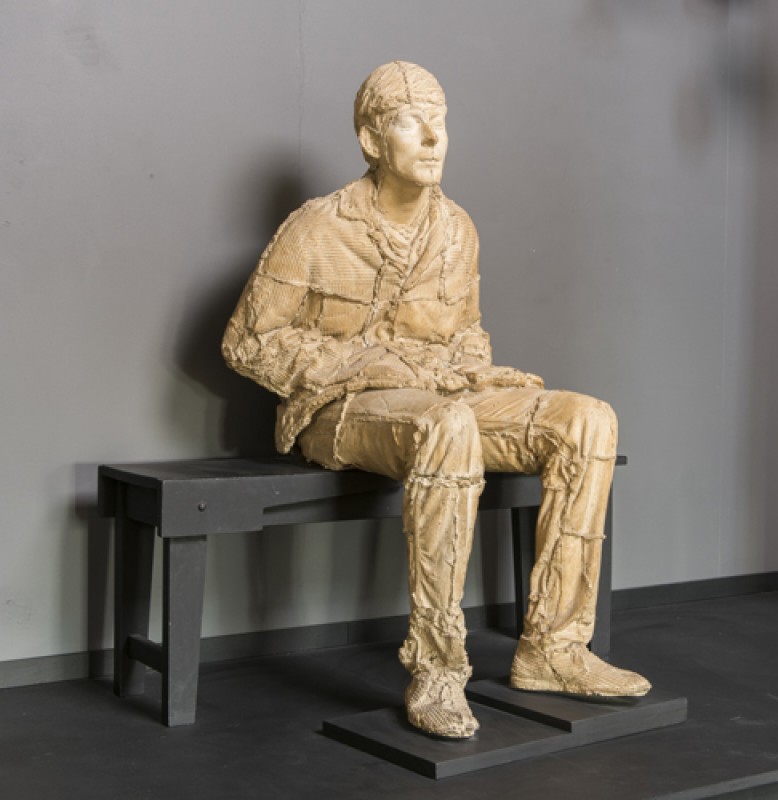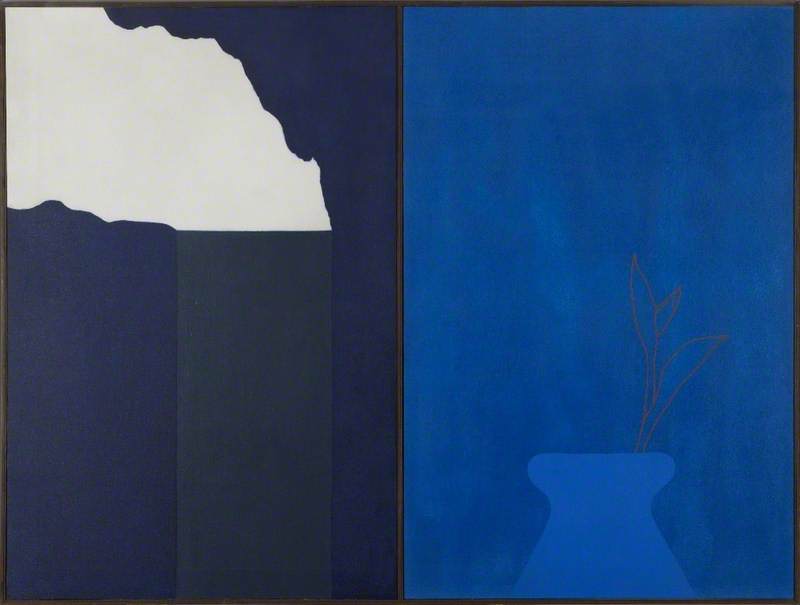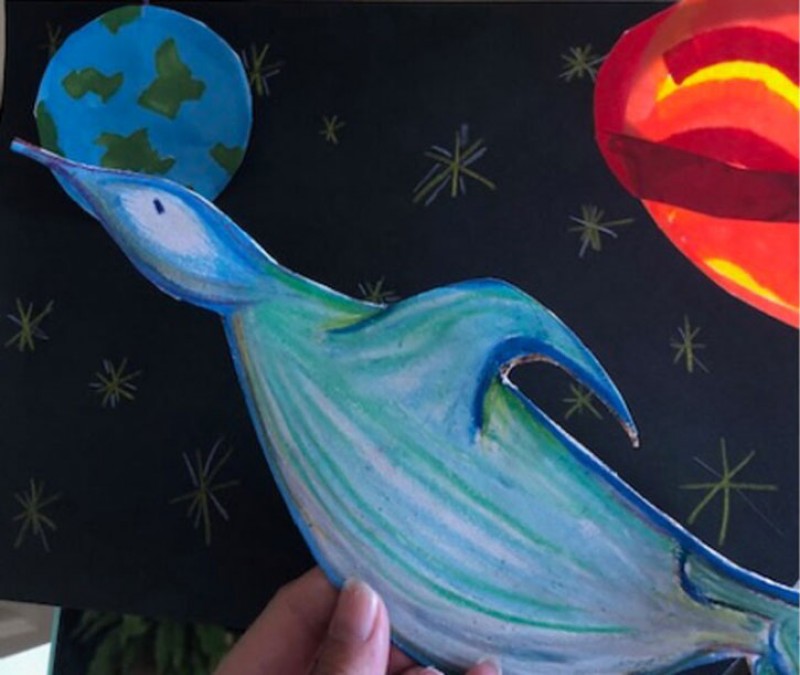'Surprised!' by Henri Rousseau
This audio clip describes Surprised! by Henri Rousseau (1844–1910).
It has been created for use as part of our primary school resource, The Superpower of Looking, in order to support pupils with blindness or visual impairment to take part in the lessons.
Explore the painting further in our resource, Surprised by a tiger!
An audio and tactile book of the painting can also be lent from Living Paintings.
Full audio description text
This is a painting of an outdoor scene. It was painted by Henri Rousseau who lived in Paris, in France. He painted this picture in 1891, 130 years ago. It is over a metre and a half wide, but not so tall, at one metre 30 centimetres.
The picture shows a dense jungle, full of leaves, grasses and trees of many different shapes. It is painted in oil paints, in lots of shades of greens, yellows, browns and greys. Almost everything is leaning over towards the right, so it seems that a strong wind is blowing across the jungle. The whole painting is covered with very pale silver lines, giving the effect of heavy, driving rain. At the top of the picture, the grey sky is cracked by lightning bolts, painted as three very thin white lines.
Near the bottom of the picture is a tiger. It is side on to us, walking through the grass towards the right. Or rather, it is floating through it, because its big paws, with sharp claws, are not squashing the grass down. The tiger's fur is orangey-brown with black stripes. Its back is arched, its bottom sticking up higher than its head, and a long, thin stripey tail is stretched out between the blades of grass behind, curling into a loop at its end. The tiger's pointed ears are pressed back, and its mouth is open, clearly showing multiple white, pointed teeth and red gums. Its long white whiskers are blowing back. As the animal is side on to us, only one of the eyes is shown. It is wide open, pale yellow with a big round pupil in the middle. This makes the tiger look surprised, but it is not certain what has startled it. Perhaps something the tiger has seen, which is not in the painting, or because of the lightning flashes in the sky. Or possibly it has heard a clap of thunder?
Everything in the picture is painted in detail, with smooth brush strokes. At the very bottom of the painting, at the front and slightly to the left, are three upright fronds with small browny-yellow and green leaves. The thin lines of their veins have been painted in a darker colour onto every leaf. In the bottom right corner is a darker green plant with big thick leaves, which is like a plant you might have in your house, sometimes called a rubber plant. Behind this, a line of tall grass runs across the full width of the painting. Each blade is individually painted, some thick, some thin, in a contrasting green or yellow, each one finishing in a sharp, slightly wavy point.
Behind the tiger, two feathery, grey grasses stick up. The top half of the picture is filled with more grasses, from which rise the trunks of a number of trees. Their long thin branches stretch across the top of the picture in front of the grey sky, pulled towards the right by the wind. They have leaves of different shapes, some big, green and pointed, others a wispy brown, or long and thin, in waving clusters.
Even though everything in this picture is very carefully painted, it's as if the different parts of the painting – the trees, the grasses, the leaves and the tiger – have been done separately and then arranged in layers on the picture, like a collage. So, although each individual thing seems quite real, the whole picture does not seem completely realistic, and the fine silvery lines of rain that cover the whole scene give it a dreamy feel.
The artist has signed the painting in the bottom left corner, in black curly writing – Henri Rousseau 1891.
